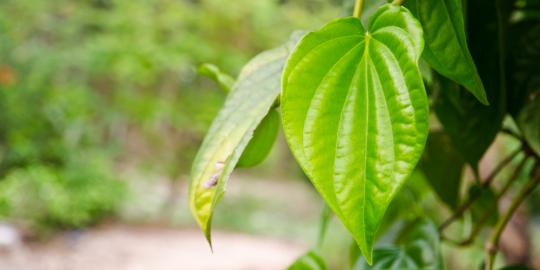Disease control in aquaculture with herbal plants as natural medicine is safer than antibiotics. The use of antibiotics that are not appropriate for the target organism will have a negative impact on the aquatic environment. Most of the antibiotics deposited in the pond sludge contribute to the development of the microbial community in a culture environment that is resistant to antibiotics.
Betel ( Piper betle L.) is included in the Peperaceae family, which is a type of plant that is widely used for medicinal purposes. Parts of the betel plant ( Piper betle L.) such as roots, seeds, and leaves have potential for medicinal purposes, but the leaves are most frequently used. Betel leaf has an antibacterial effect and prevents the growth of food-borne pathogens, because it contains flavonoids and polyphenols. The results of the research showed that the betel leaf methanol and ethanol extracts were effective against the pathogenic bacteria Escherichia coli, Pseudomanas aeruginosa , Staphylococcus aureus. Betel leaf extract with 40% ethanol has been shown to inhibit pathogenic bacteria in shrimp and fish, namely:Vibrio parahaemolyticus, Vibrio parahaemolyticus , Edwardsiella ictaluri , Edwardsiella tarda , Aeromonas veronii, and Streptococcus agalactiae .
This research aims to determine the minimum concentration of betel leaf ethanol extract which can inhibit and kill the Vibrio harveyi bacteria that causes vibriosis in shrimps by in vitro. The concentration of betel leaf ethanol extract solution used was: 6.25%, 3.12%, 1.56%, 0.78%, 0.39%, 0.19%, 0.09%, 0.04%, 0.02%, and 0.01%. Serial dilution of betel leaf extract using DMSO 10% to obtain the concentration for the treatment. Each treatment concentration was added with 1 ml of V. harveyi bacterial suspension with a bacterial density of 3 x 10 8 CFU / ml. The positive control was a tube containing 1 ml of betel leaf extract and 1 ml of 10% DMSO solvent, while the negative control contained 1 ml of V. harveyi bacteria with 3 x 10 8 CFU / ml density and 1 ml DMSO 10%. Incubation of the treatment and control tubes was done at 37 ° C for 24 hours. The parameters observed were Minimum Inhibition Concentration (MIC) and Minimum Bactericidal Concentration (MBC) of betel leaf ethanol extract.
The results showed that betel leaf extract was able to inhibit at a minimum concentration of 0.19% while at a minimum concentration of 0.39% it was able to kill the Vibrio harveyi bacteria that causes Vibriosis in shrimps. The antibacterial activity of betel leaf extract is played by the sterols contained in the extract. The interaction of the sterol molecule surface with the bacterial cell wall and membrane causes changes in the main structure of the cell wall and membrane, which in turn leads to pore formation and degradation of the bacterial components.
Author: Sarifah Yuli Kurniasari, Wahju Tjahjaningsih*, Nanik Sianita
Details of the article can be viewed at:
https://iopscience.iop.org/article/10.1088/1755-1315/718/1/012048





